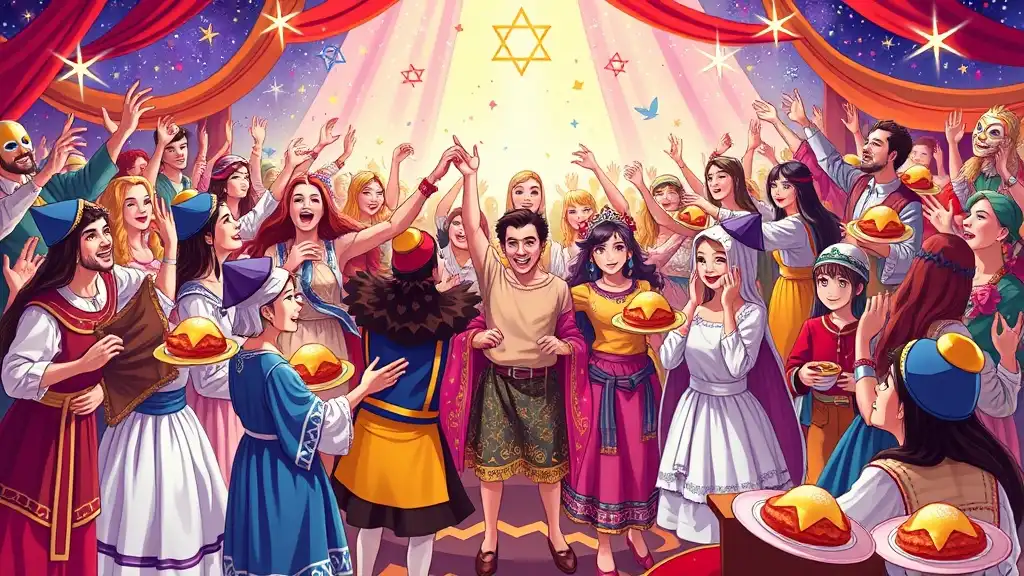Purim is a deeply significant holiday within the Jewish tradition, celebrated with exuberant festivity and profound spiritual reflection. It commemorates the story of Esther, a young Jewish woman who rose to prominence in the Persian Empire and ultimately saved her people from destruction. While the narrative itself is compelling, the spiritual meanings hidden within the events of Purim offer layers of wisdom and insight that can resonate with anyone on a personal or communal level.
Historical Context of Purim
The story of Esther, as recounted in the Book of Esther, unfolds in the ancient Persian Empire. It's a tale of bravery, betrayal, and divine intervention. Esther, a Jewish orphan raised by her cousin Mordecai, finds herself in a position of power as she becomes queen. The narrative takes a dramatic turn when Haman, an advisor to the king, plots to annihilate all the Jews. It is Esther’s courage and resourcefulness that ultimately thwart Haman’s scheme, leading to a celebration of survival and unity.
Understanding the historical context of Purim enriches our appreciation for its observance. Over centuries, the holiday has evolved, with customs and traditions adapting to different cultures and communities. From masquerades to festive meals, each action is laden with significance, inviting participants to engage in the spirit of the time.

The Spiritual Meaning of Purim
Understanding Divine Providence in the Story of Esther
The festive spirit of Purim comes alive through the recognition of divine providence at play. Throughout the narrative, the hidden nature of God is revealed through seemingly coincidental events. This prompts us to reflect on the invisible threads woven through our own lives. Are we aware of the miracles that surround us daily? Purim encourages us to look beyond the surface to discover how divine forces may be guiding our paths even when we feel alone or uncertain.
Themes of Courage and Empowerment
Central to the story of Esther is a profound message of courage and empowerment. Esther’s journey from a quiet, obedient girl to a brave leader prompts us to examine our own capacities for courage. What challenges do we face that require us to speak up and act? Through her actions, we’re reminded of the importance of standing up not just for ourselves, but for those who may be powerless.
Moreover, Purim exemplifies the strength of community support. Mordecai’s unwavering belief in Esther and the unity of the Jewish people during their time of crisis highlight the importance of standing together in times of adversity. Community can amplify voices, ignite courage, and drive collective action.

Celebrating Purim: Rituals and Their Significance
Megillah Reading: The Heart of Purim
One of the most sacred rituals during Purim is the reading of the Megillah, the Scroll of Esther. This practice is not just a historical recounting but an invitation to draw spiritual lessons from the text. Each character in the story embodies various aspects of the human experience, prompting readers to ponder their own role in the ongoing narrative of life.
The Megillah reminds us that our stories are intertwined with greater narratives. Listening to the reading serves as an opportunity for reflection, helping us understand how our choices can impact those around us and create ripples of change.
Costume Wearing and Its Deeper Meaning
In addition to the Megillah, it is customary to wear costumes during Purim, embodying a spirit of playfulness and transformation. What masks do we wear in our daily lives? This practice encourages us to embrace our true identities and the complexities inherent within them. Costumes give us the freedom to explore different facets of ourselves, inviting inquiry into authenticity and self-acceptance.
Festive Meals and Giving to the Needy
The celebration of Purim spans beyond joy and merriment; it also emphasizes generosity. Sharing festive meals, known as se’udat Purim, plays a vital role in strengthening community bonds. It’s a time for feasting and celebrating together – a reminder that joy is magnified when shared.
Additionally, giving to those in need is paramount during Purim. This act of charity (matanot la'evyonim) not only uplifts the community but also reinforces the significance of compassion and support. It invites us to reflect on our own responsibilities towards those who are less fortunate and encourages a spirit of empathy and kindness throughout the year.

Finding Personal Meaning in Purim
As we delve into the personal significance of Purim, the holiday emerges as a powerful moment for reflection and introspection. Engaging in practices such as journaling allows us to connect more deeply with our own spiritual journeys. What insights can we glean from Esther’s courage?
Engaging with Purim traditions can also pave the way for personal rituals that foster spiritual awareness. By creating our own customs, we can forge connections to our heritage while making them relevant to our contemporary lives. How can we incorporate the values of Purim into our daily practices?

Conclusion: Carrying the Spirit of Purim Forward
Purim’s essence lies in its powerful lessons of courage, community, and divine providence. As we celebrate this joyous occasion, we can carry its spirit forward by integrating these lessons into our everyday lives. The legacy of Purim is not confined to its festivities; it continues to inspire renewal and hope, challenging us to embrace our identities, support one another, and recognize the miracles that unfold around us. Let us allow the teachings of Purim to enrich our lives, lighting a pathway of compassion, courage, and community long after the celebrations conclude.



















